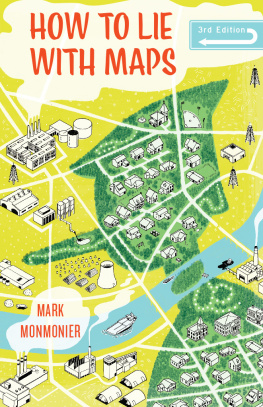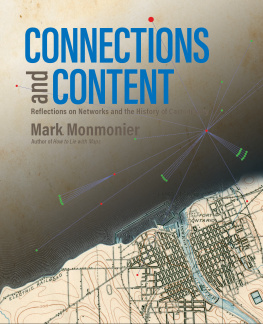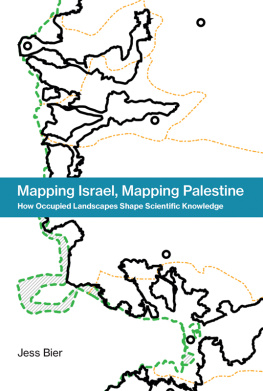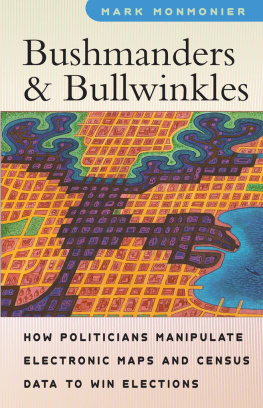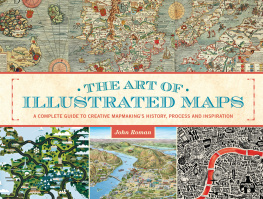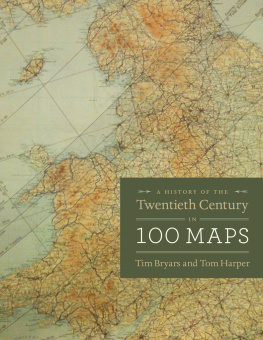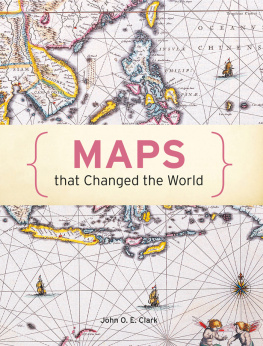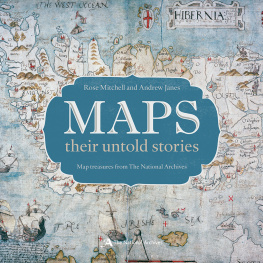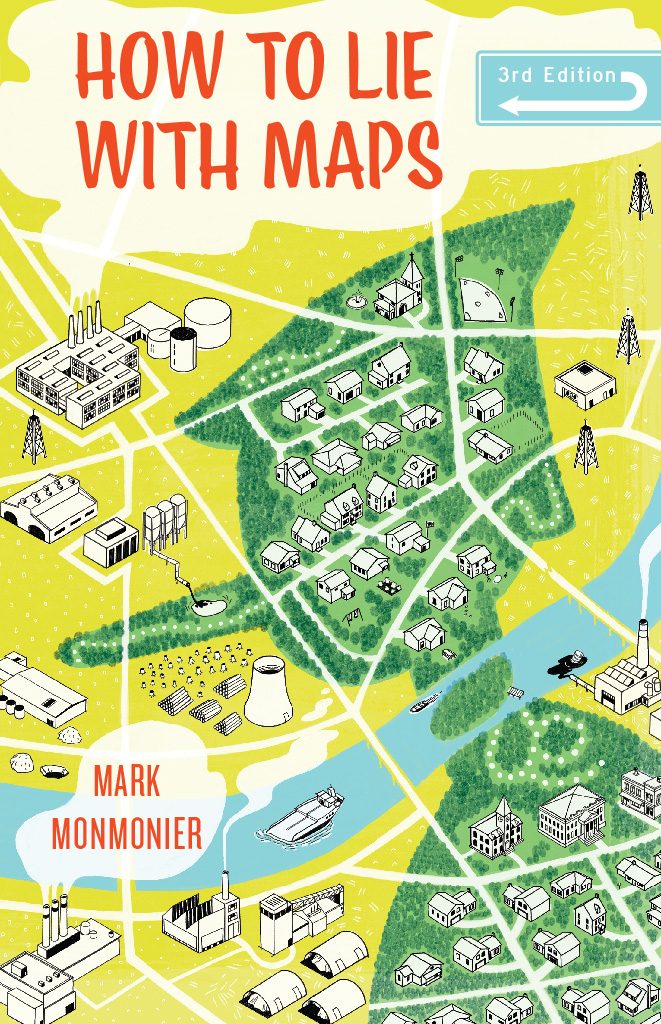
How to Lie with Maps
How to Lie with Maps
Third Edition
Mark Monmonier
The University of Chicago Press
CHICAGO AND LONDON
The University of Chicago Press, Chicago 60637
The University of Chicago Press, Ltd., London
1991, 1996, 2018 by The University of Chicago
All rights reserved. No part of this book may be used or reproduced in any manner whatsoever without written permission, except in the case of brief quotations in critical articles and reviews. For more information, contact the University of Chicago Press, 1427 E. 60th St., Chicago, IL 60637.
Published 2018
Printed in the United States of America
27 26 25 24 23 22 21 20 19 18 1 2 3 4 5
ISBN-13: 978-0-226-43592-3 (paper)
ISBN-13: 978-0-226-43608-1 (e-book)
DOI: https://doi.org/10.7208/chicago/9780226436081.001.0001
Library of Congress Cataloging-in-Publication Data
Names: Monmonier, Mark, author.
Title: How to lie with maps / Mark Monmonier.
Description: Third edition. | Chicago ; London : The University of Chicago Press, 2018. | Includes bibliographical references and index.
Identifiers: LCCN 2017039382| ISBN 9780226435923 (pbk. : alk. paper) | ISBN 9780226436081 (e-book)
Subjects: LCSH: Cartography. | Deception.
Classification: LCC G108.7 .M66 2018 | DDC 526dc23
LC record available at https://lccn.loc.gov/2017039382
 This paper meets the requirements of ANSI/NISO Z39.48-1992 (Permanence of Paper).
This paper meets the requirements of ANSI/NISO Z39.48-1992 (Permanence of Paper).
For Marge and Jo, again
Contents
More than twenty years have passed between the second and third editions of this book. For all that has changed in the world of mapping during that timeincluding, above all, radical technological changes in how maps are made, displayed, and usedthe basic principles set forth in the first two editions are as relevant as ever: maps offer believable representations of reality, people tend to trust them even though oftentimes one map cannot tell the whole story, and healthy skepticism is essential because map authors who dont understand or otherwise ignore cartographic principles can commit misleading blunders. Consequently maps can indeed lie in multiple ways, inadvertently if not deliberately.
When I embarked on this new edition, I was determined to preserve the essential character of the book while updating the text (and the graphics) for a new generation of readers. As one of the geographers who reviewed my revision proposal pointed out, most of his students have never used a paper map for regular navigation, a perspective this edition has taken into account. While most of the issues discussed in the previous editions are still relevant (with some adjustments) to digital as well as paper maps, overhead imagery and online mapping have also introduced new issues requiring coverage. I decided to replace the outdated chapter Multimedia, Experiential Maps, and Graphic Scripts with three new chapters on image maps, prohibitive cartography, and fast maps, the latter category encompassing animated maps, interactive maps, web maps, and clever static maps disseminated electronically on the internetmaps that go viral are, indisputably, fast maps. The result is a modest increase in the books length but an important improvement in its scope. Most of the images added to the enhanced color insert are also related to these new chapters.
Although many readers first encountered How to Lie with Mapsas an assigned text in a college course on cartography, map reading, basic geography, or geographic information systems (GIS), I continue to envision my target audience as the intelligent lay reader who is curious about maps, a population that has only grown over time with the proliferation of maps in all media. And as graphics software has increasingly allowed map users to become mapmakers in their own right, I hope this book will guide them to make more informed cartographic choices.
Mark Monmonier
DeWitt, New York
Introduction
Not only is it easy to lie with maps, its essential. To portray meaningful relationships for a complex, three-dimensional world on a flat sheet of paper or a screen, a map must distort reality. As a scale model, the map must use symbols that almost always are proportionally much bigger or thicker than the features they represent. To avoid hiding critical information in a fog of detail, the map must offer a selective, incomplete view of reality.
Next page
